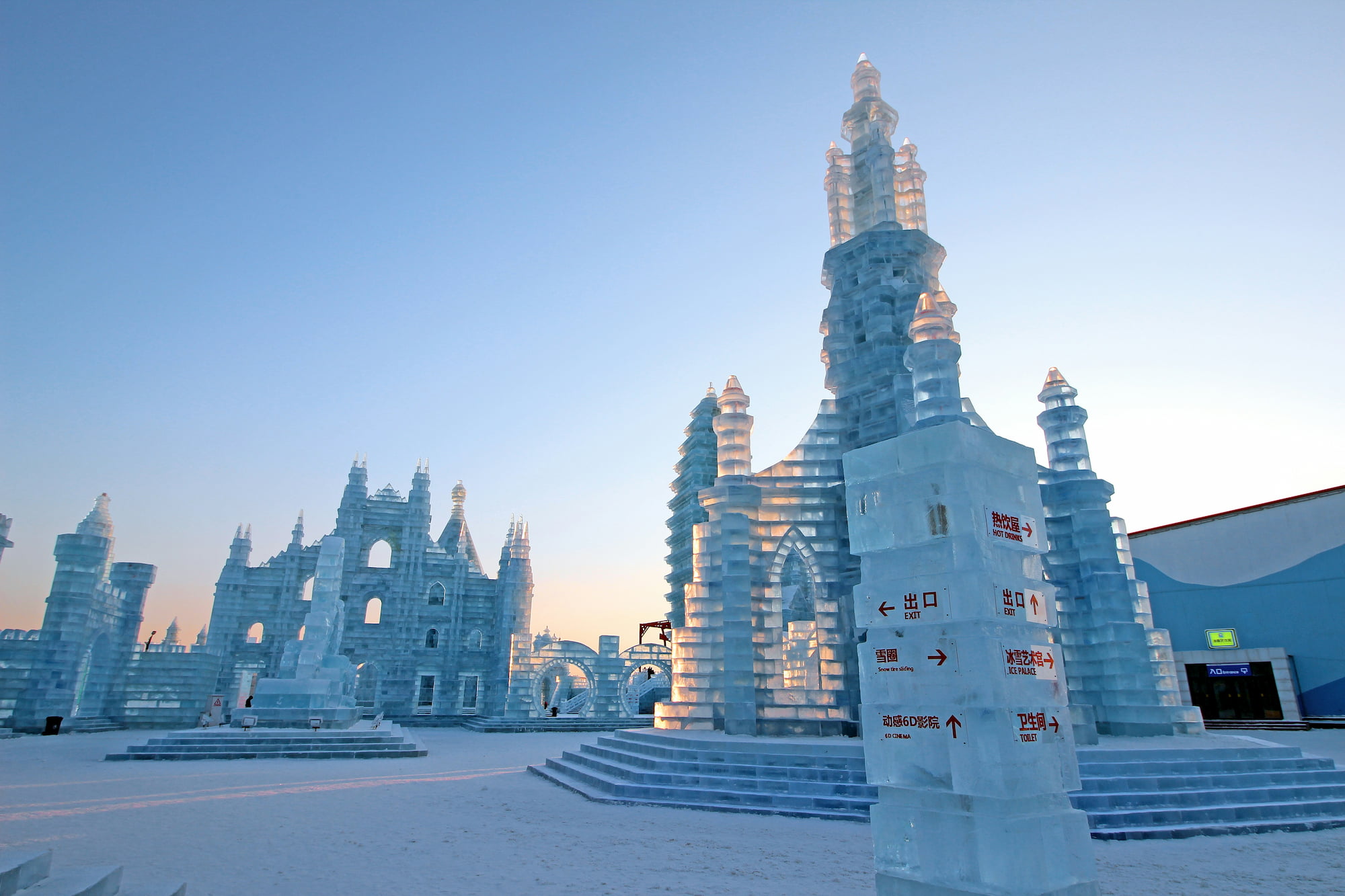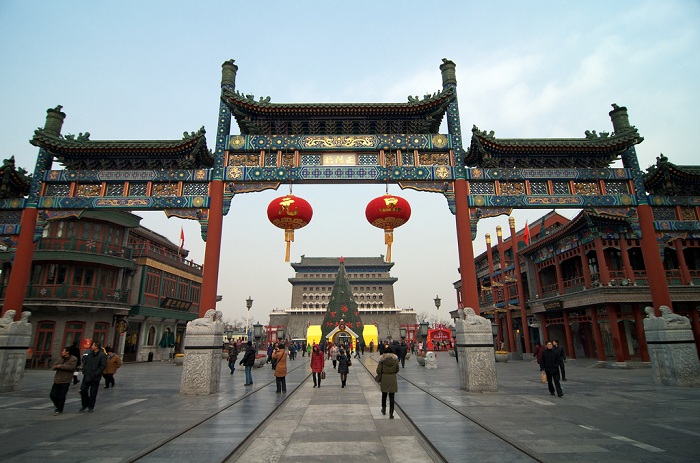The Northeast region, known as Dongbei (东北) in Chinese, encompasses Liaoning, Jilin, and Heilongjiang provinces, along with East Wuleng City in Inner Mongolia. Historical events, such as the Japanese invasion and the Civil War, unfolded on this fertile land, rich in natural resources like coal, fertile soil, and various minerals.
During the first two decades of the People’s Republic of China (PRC), the Northeast transitioned into the country’s industrial hub, primarily focusing on heavy industry. However, as the nation shifted from heavy to light industry during the reform and opening-up era, the region underwent a significant transformation. This shift marked the beginning of challenges for Northeast China— economic growth slowed, residents migrated southward, birth rates declined, reforms lagged, and innovation became scarce.
Download our report on Gen Z consumers

Nevertheless, there is renewed hope for comprehensive revitalization in the Northeast, and signs suggest that a new era of rejuvenation is on the horizon. Notably, during 2023 Q1, the added value of large-scale industries in Liaoning and Jilin witnessed a year-on-year increase of 5.3% and 5.7%, respectively, surpassing the national average by 1.5 and 1.9 percentage points.
Northeast Renaissance: Cultural reawakening in Dongbei
The term “Northeast Renaissance” (东北文艺复兴) gained prominence through Gem, a rapper from the Northeast, who rose to fame with the intentionally nostalgic hit “Yelang Disco” in 2019. This cultural resurgence extends beyond music, challenging historical perceptions of the Northeast as a cultural backwater and an industrial decline zone.
Comedians like Li Xueqin and Wang Jianguo, as well as writers such as Shuang Xuetao, Ban Yu, and Zheng Zhi, play a crucial role in the Northeast Renaissance. The TV series “The Long Season” (漫长的季节), hailed as one of the standout shows of 2023, is set in Northeast China and has been instrumental in transforming the region’s dilapidated chimneys, abandoned dance halls, and desolate ice rinks into symbols of alternative coolness.
This cultural reawakening has sparked a growing interest in Dongbei culture and products, reflecting a broader appreciation for the unique and often overlooked aspects of the region. For instance, the Dongbei floral cotton-padded jackets (花棉袄) became a craze in December 2023, especially praised for their value for money. Originally popular in rural areas 40 years ago, these jackets feature classic floral patterns, offering warmth, affordability, and vibrant colors. This trend resulted in record-breaking sales for businesses specializing in floral cotton-padded jackets. According to data from the Alibaba-owned B2B platform 1688, between November 1 and December 12 in 2023, the daily average search volume for floral cotton-padded jackets increased by 163%, and the number of buyers increased by 49%.

From “rust belt” to tourist magnet
In addition to this cultural revival, Chinese Northeastern provinces are seeking an alternative growth model post the crisis in heavy industry with tourism emerging as a prominent option. After overcoming the pandemic, Chinese consumers have restarted traveling, propelling the growth of the tourism sector.
Harbin: from industrial hub to tourist destination
Harbin is rapidly gaining popularity as a renowned tourist destination, evident in the record-breaking statistics from the Harbin Municipal Culture, Radio, Television, and Tourism Bureau. During the New Year’s holiday in 2024, the city welcomed an impressive 3.05 million tourists, generating a substantial total tourism revenue of RMB 5.9 billion. Remarkably, these figures surpass Sanya‘s figures for the same period by more than fivefold. Sanya, known for its tropical climate, was traditionally a popular winter destination. However, the recent surge in tourism to Harbin suggests a changing trend, drawing attention to the growing appeal of cold-weather experiences over the traditionally warmer options like Sanya.
The enthusiasm for ice and snow tourism is reflected by platforms like Xiaohongshu, with over 4 million posts related to skiing, and the hashtag “skiing(滑雪)” accumulating an impressive 2 billion views as of January 2024.
This surge in popularity for Harbin is not only impacting the city itself but also extending its influence to nearby destinations like Changbai Mountain and Yanji. Capitalizing on this trend, Harbin is actively implementing enhancements tailored to attract tourists from other provinces. In particular, the city is adapting traditional recipes to the tastes of Southern travelers.
Years of preparation behind Northeast China’s winter tourism boom
The surge in Harbin’s popularity as a tourist destination doesn’t come out of nowhere; it is the result of meticulous work spanning two decades. Despite the Northeast region’s historically tepid growth in tourism, it possesses abundant tourism resources. The recent shift in preferences is influenced by changing consumer behaviors, with a heightened desire for outdoor activities after the pandemic and an increased appreciation for natural destinations.
During the winter of 2023-2024, Harbin’s ice and snow tourism rapidly gained prominence on major domestic online platforms and captured mainstream media headlines. The city made extensive use of social media to create buzz and go viral. From the initial rap videos promoting Harbin to the emergence of internet buzzwords like “尔滨” (Erbin) and “滨子” (Binzi), which are nicknames for Harbin (in Chinese 哈尔滨, Haerbin), these trends are intricately linked to the amplifying effect of social platforms.
Harbin’s newfound prominence isn’t solely attributed to creative initiatives by city tourism officials. The head of the tourism bureau actively participated on social media, soliciting public opinions to optimize tourism facilities and enhance visitor experiences. This dynamic interaction between government officials, citizens, and relevant department heads vividly illustrates the evolution of social media, transcending its role of promoting city images to become a potent medium for interactive communication between the government and the public.

Spillover of Harbin’s popularity to other cities in Chinese Dongbei
When travelers explore Dongbei, they typically prefer extended journeys that encompass multiple destinations, fueling the popularity of 2-4-day tours. Therefore, tourists tend to venture beyond Harbin and explore other captivating destinations within the region.
The impact of the Harbin phenomenon is rippling, drawing attention to the neighboring northeastern provinces of Jilin and Liaoning, both of which are also undergoing a surge in tourism. In 2023, Liaoning Province embarked on the inaugural year of the “Three-year Action for comprehensive revitalization.” During the first quarter of 2023, Shenyang (provincial capital of Liaoning) witnessed an impressive 18% year-on-year growth in industrial added value, securing the top position among sub-provincial cities with a notable GDP growth rate of 6.6%.
When it comes to Shenyang, numerous local attractions draw tourists to visit. These include historical landmarks like the Shenyang imperial palace, snack and commercial streets, and bustling night markets offering a glimpse into the city’s vibrant nightlife culture.
On January 4, a resident of Shenyang took to social media to suggest the introduction of luggage storage facilities at the morning market, inspired by similar services in Harbin. The following day, the director of the Shenyang Municipal Cultural Tourism Bureau confirmed the adoption of the suggestion and announced the implementation of the service at the market. This exemplifies how tourists, through social media, can efficiently provide feedback and recommendations to local authorities, leading to prompt problem-solving—a commendable form of interactive engagement.

The rise of the ice and snow economy in Northeast China
In 2003, the Chinese government issued the “Revitalization Strategy for Northeastern and Other Old Industrial Bases.” Symposiums in 2018 and 2023 shifted focus to comprehensive revitalization. In 2023, marking the 20th anniversary, the emphasis is on developing the ice and snow economy, and promoting sports, culture, equipment, and tourism in the region.
In recent years, the Northeast region has actively pursued the development of an ice and snow economy, strategically planning and implementing various projects. Since 2016, Jilin Province has embarked on ambitious initiatives, such as constructing world-class ski resorts, premier skating halls, and an alpine extreme skiing challenge experience resort. Iconic events like the Ice and Snow Tourism Festival in Harbin, the Rime Ice and Snow Festival in Jilin City, and the Chagan Lake Ice and Snow Fishing have further solidified the region’s reputation as a premier destination for ice and snow activities.
This burgeoning industry not only enhances the Northeast’s appeal but also brings substantial economic benefits, generating significant purchase orders for ice and snow-related products and services. Moreover, it fosters collaboration among businesses, local governments, and tourism organizations, driving economic growth and development in the region.
Dongbei Renaissance: unveiling Northeast China’s potential
- The Northeast region of China, once the country’s industrial hub, is now undergoing a revitalization phase.
- The burgeoning ice and snow economy in the region signifies a growing market for winter sports, equipment, and tourism ventures.
- Cultural resurgence in Dongbei fosters a renewed interest in regional culture and products, offering potential avenues for collaboration and consumer engagement.
- Harbin’s transition into a vibrant tourist destination underscores the evolving appeal and unique offerings of the region.
- Collaborative initiatives among businesses, local authorities, and tourism entities in Northeast China create an environment conducive to growth and development opportunities.





